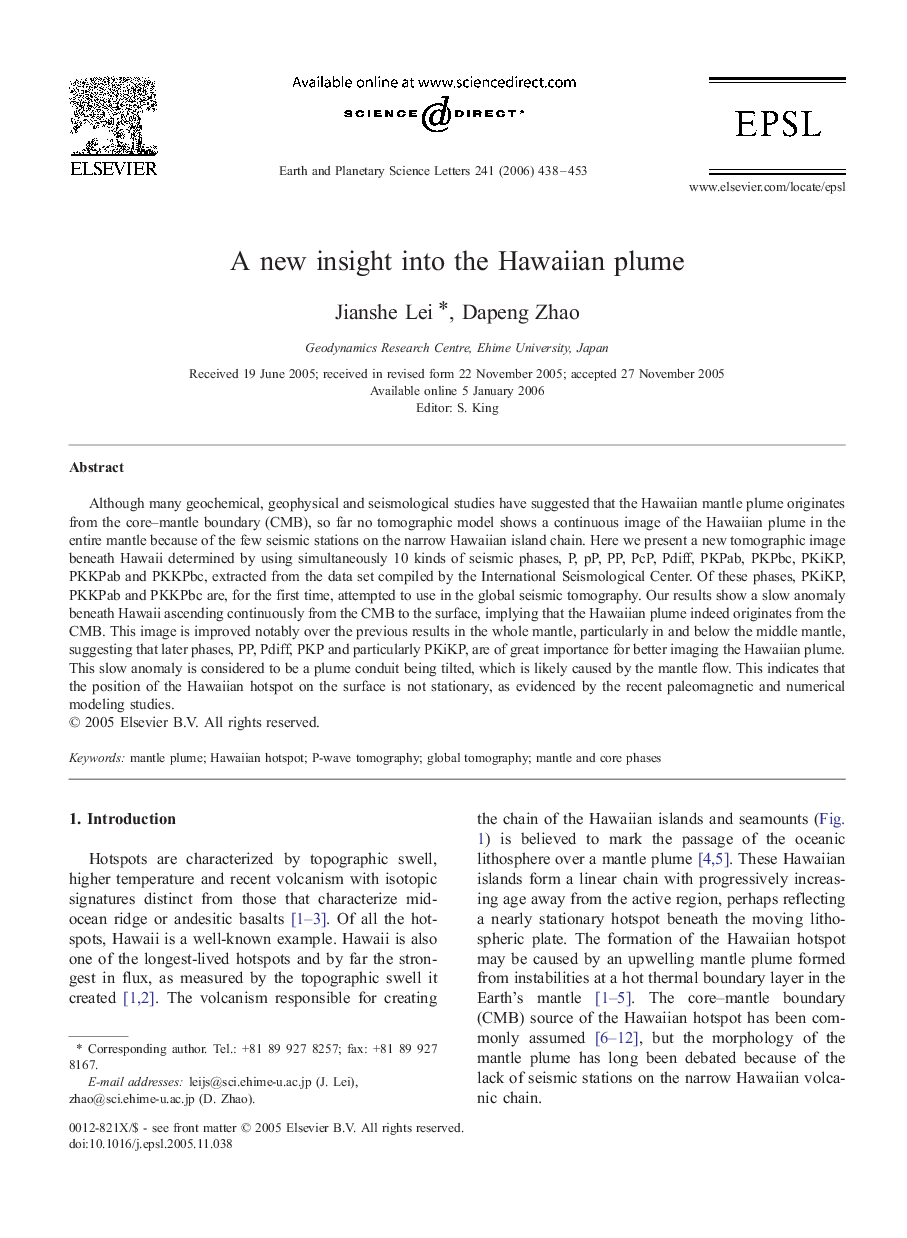| Article ID | Journal | Published Year | Pages | File Type |
|---|---|---|---|---|
| 4681191 | Earth and Planetary Science Letters | 2006 | 16 Pages |
Although many geochemical, geophysical and seismological studies have suggested that the Hawaiian mantle plume originates from the core–mantle boundary (CMB), so far no tomographic model shows a continuous image of the Hawaiian plume in the entire mantle because of the few seismic stations on the narrow Hawaiian island chain. Here we present a new tomographic image beneath Hawaii determined by using simultaneously 10 kinds of seismic phases, P, pP, PP, PcP, Pdiff, PKPab, PKPbc, PKiKP, PKKPab and PKKPbc, extracted from the data set compiled by the International Seismological Center. Of these phases, PKiKP, PKKPab and PKKPbc are, for the first time, attempted to use in the global seismic tomography. Our results show a slow anomaly beneath Hawaii ascending continuously from the CMB to the surface, implying that the Hawaiian plume indeed originates from the CMB. This image is improved notably over the previous results in the whole mantle, particularly in and below the middle mantle, suggesting that later phases, PP, Pdiff, PKP and particularly PKiKP, are of great importance for better imaging the Hawaiian plume. This slow anomaly is considered to be a plume conduit being tilted, which is likely caused by the mantle flow. This indicates that the position of the Hawaiian hotspot on the surface is not stationary, as evidenced by the recent paleomagnetic and numerical modeling studies.
